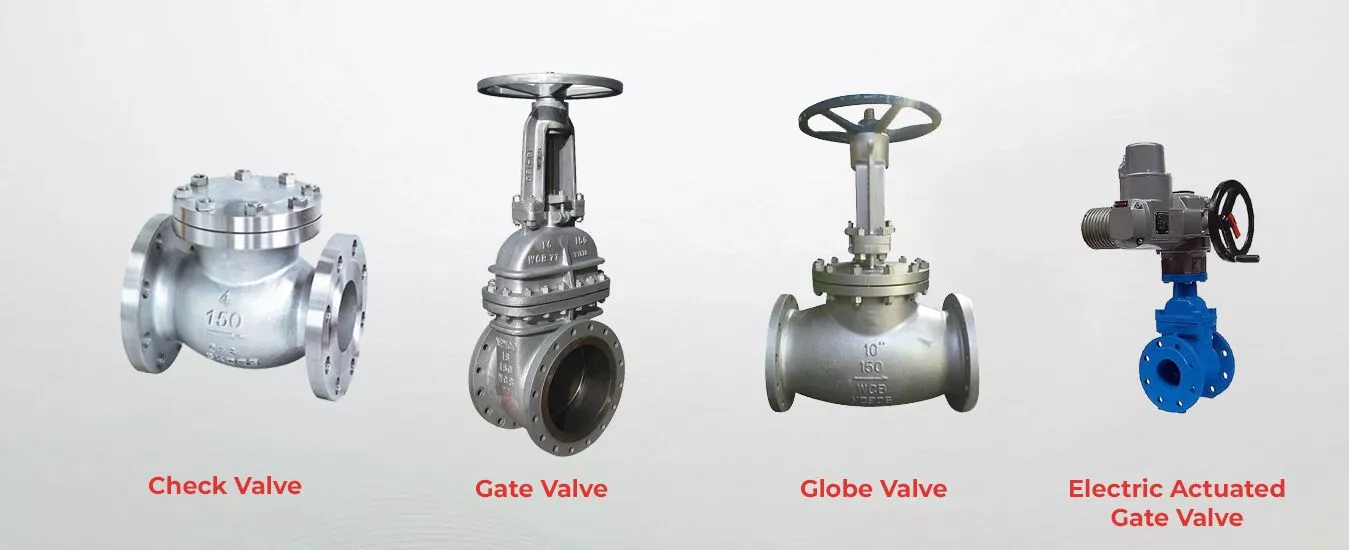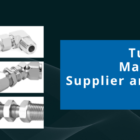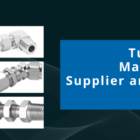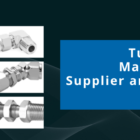Valves are essentially tools that control, regulate, or direct flow within a system or process. They frequently have a variety of features that serve to specify their best use.
By opening, closing, or partially obstructing different passages, a valve regulates, directs, or controls the flow of a fluid (gases, liquids, fluidized solids, or scurries). Despite the fact that valves are technically fittings, they are frequently discussed separately.
Mcneil Instruments inc. is one of the best Industrial Valve Fittings Manufacturers, Suppliers, and Exporters in India.
Whether you’re managing the flow of liquids, solids, gases, or other materials, Mcneil Instruments offers a range of stainless steel valves designed to meet your needs. Our valves provide crucial functions, including:
- Starting or Stopping Flow: Control the flow of substances by opening or closing the valve.
- Regulating Flow and Pressure: Adjust and maintain the desired flow rate and pressure within your piping system.
- Controlling Flow Direction: Direct the flow within your system to ensure proper distribution.
- Throttling Flow Rates: Fine-tune the flow rate to suit specific process requirements.
- Improving Safety: Relieve excess pressure or vacuum to enhance system safety.
Valve Opening Methods
The way a valve opens and closes can affect its performance and control over flow. Here are the main types of valve opening mechanisms:
- Multi-Turn Valves: Operate like a screw or piston. Turning the handle moves a plug, plate, or membrane to block or allow flow. These valves offer varying speeds for opening and closing, suitable for applications with different differential pressures.
- Quarter-Turn Valves: Provide a full range of motion with a 90-degree turn of the handle. Ideal for applications where rapid action is more important than precision, these valves are easy to open or close quickly.
Actuation Methods
Valves can be operated manually, automatically, or through actuators. Here’s a breakdown of common actuation methods:
- Manual Valves: Operated by hand using handwheels, levers, gear wheels, or chains. These valves are simple and effective for straightforward applications.
- Actuated Valves: Controlled by electric motors, pneumatic systems, hydraulic systems, or solenoids. These valves are suited for remote control and automation in high-precision or large-scale operations.
- Automatic Valves: Activate based on specific conditions, such as check valves that close during backflow or pressure release valves that open when over-pressure is detected.
At Mcneil Instruments, our stainless steel valves are designed to provide reliable and efficient performance, tailored to your specific needs and application requirements.
Valves serve a variety of purposes, such as:
- based on the status of the valve, starting or stopping the flow
- controlling the pressure and flow within a piping system
- regulating the flow direction inside a pipe system
- enhancing security by reducing pressure or vacuum in a pipe system
Explained valve opening methods
Even while various valves work towards the same objectives, their mechanical strategies can differ.
A valve’s total performance is affected by how it opens and closes, as well as by how much control you have over the flow and how rapidly the valve can work.
The majority of valves fall into one of three groups:
- Manual Valves: These valves use handwheels, hand levels, gear wheels, or chains to activate and are typically regulated by hand.
- Actuated Valves: These valves provide remote control and automation for high-precision or large-scale applications and are frequently connected to electric motors, air or pneumatic systems, hydraulic systems, or solenoids.
- Automatic Valves: Some valves open when a particular flow requirement is satisfied. Examples include pressure release valves opening when an overpressure condition is recognised or check valves closing during backflow.
Common Valve Types and Their Applications
At Mcneil Instruments, we offer a wide range of valves, each with unique characteristics and applications to fit various industrial needs. Here’s an overview of common valve types and their specific uses:
- Ball Valve: Known for its quick-acting 90-degree turn handles, the ball valve uses a ball to control flow, providing straightforward on-off control. It’s generally faster and easier to operate compared to gate valves.
- Butterfly Valve: Featuring a compact design, the butterfly valve utilizes rotary motion and is ideal for tight spaces due to its wafer-type construction. It’s available in various configurations to suit different needs.
- Check Valve: Designed to prevent backflow, check valves are typically self-activating. They open automatically when flow is in the intended direction and close if the flow reverses, ensuring protection against backflow.
- Gate Valve: A common type of valve, gate valves use linear motion to start or stop flow. They are typically used in fully open or closed positions and are not suited for flow regulation.
- Knife Gate Valve: Ideal for controlling media containing solids, the knife gate valve features a thin gate that cuts through materials to create a seal. It’s suitable for applications involving grease, oils, paper pulp, slurry, and wastewater.
- Globe Valve: Often used for modulating control operations, globe valves come in three body types: T-body, Y-Pattern, and Angle body, providing versatile options for flow regulation.
- Needle Valve: Designed for fine, accurate flow control in small diameter piping systems, needle valves use a conical disc with a pointed tip to regulate flow precisely.
- Pinch Valve: Used for handling solid materials, slurries, and liquids with suspended solids, pinch valves utilize a linear motion and feature an internal sleeve to isolate the media.
- Plug Valve: Equipped with a quick-acting quarter-turn handle, plug valves use tapered or cylindrical plugs to control flow. They are reliable in high-pressure or high-temperature environments and offer excellent tight shutoff.
- Pressure Relief Valve: These spring-automated valves help maintain system safety by relieving excess pressure and returning the system to the desired pressure level during over-pressure events.
Valve Functional Designations
Valves can also be classified by their function rather than design:
- Isolation Valves: Include ball, butterfly, diaphragm, gate, pinch, piston, and plug valves.
- Regulation Valves: Include ball, butterfly, diaphragm, globe, needle, pinch, and plug valves.
- Safety Relief Valves: Include pressure release and vacuum relief valves.
- Non-Return Valves: Include swing check and lift check valves.
- Special Purpose Valves: Include multi-port, float, foot, knife gate, and line blind valves.
Valve Sizing Considerations
Choosing the correct valve size is crucial for optimizing performance, cost, and reliability. Here’s what to consider:
- Physical Dimensions and Internal Size: Ensure the valve fits within the required space and provides the appropriate flow rate (CV). A valve that is too small may cause reduced flow and increased back-pressure, while one that is too large may result in inadequate flow control.
- Flow Rate: Select a valve that matches the flow rate needs of your system. Some valves are designed for high flow rates, while others may constrict flow and increase pressure.
- Connector Diameter vs. Flow Needs: Sometimes a larger valve is necessary to accommodate the required flow rate, even if the connector diameter suggests otherwise.
At Mcneil Instruments, we provide a range of valves to meet diverse industrial requirements, ensuring optimal performance and efficiency for your applications.
Typical functional names and their typical design categories include:
- Isolation Valves: ball, butterfly, diaphragm, gate, pinch, piston, and plug
- Safety Relief Valves: Vacuum and pressure relief valves
- Non-Return Valves: lift and swing check valves
- Special Purpose Valves: Valves with many ports, floats, feet, knife gates and line blinds
The key to an accurate fit and reliable operation is the valve end connections.
After sizing and design, it’s crucial to think about valve end connections.
The most obvious takeaway from this is that you should select an end connection that works with your plumbing, but there are functional aspects of common end types that could make one valve better suited to your needs than another.
Valve End Connections: Ensuring a Perfect Fit and Reliable Operation
At Mcneil Instruments, selecting the right valve end connection is crucial for ensuring compatibility with your piping system and achieving optimal performance. Here’s a guide to common valve end types and their functional characteristics:
Common Valve End Types
- Screwed or Threaded Connections: Ideal for instrument connections and sample points. These connections are often used where ease of assembly and disassembly is needed.
- Flanged Connections: The most common type for general piping applications. Flanged ends provide a robust connection, making them suitable for various industrial applications.
- Butt Welded Connections: Typically used in high-pressure or high-temperature environments. Butt-welded ends offer a strong and leak-proof connection for demanding conditions.
- Socket Welded Connections: Commonly used in small-bore piping systems where threaded connections are not permitted. Socket-welded ends are ideal for applications requiring a secure, permanent connection.
- Wafer and Lug Connections: Perfect for compact valves in systems with limited space. Wafer and lug ends are designed for easy installation and removal in confined areas.
Selecting the appropriate valve end connection ensures a secure fit and reliable operation in your system. At Mcneil Instruments, we provide a range of valve end connections tailored to meet your specific needs and operational requirements.
Below are typical valve connections and ends:
- Threaded or Screwed: utilised frequently in instrument connections or sample points
- Flanged: the most typical ends for use with piping
- Butt Welded: utilised frequently in high-pressure or high-temperature activities
- Socket Welded: used frequently on tiny bore pipework where threaded connections are not allowed
- Wafer and Lug: used frequently for small valves put in systems with little room
Conclusions
In this overview Mcneil instruments Inc. is one of the Best Valves Instrumentation Manufacturers and Stockiest in India. Making the appropriate valve selection for your project may seem difficult. However, you may quickly narrow down your selections to find the ideal valves for your needs by starting with generic criteria, such as valve design, valve size, and valve actuation mechanism.






